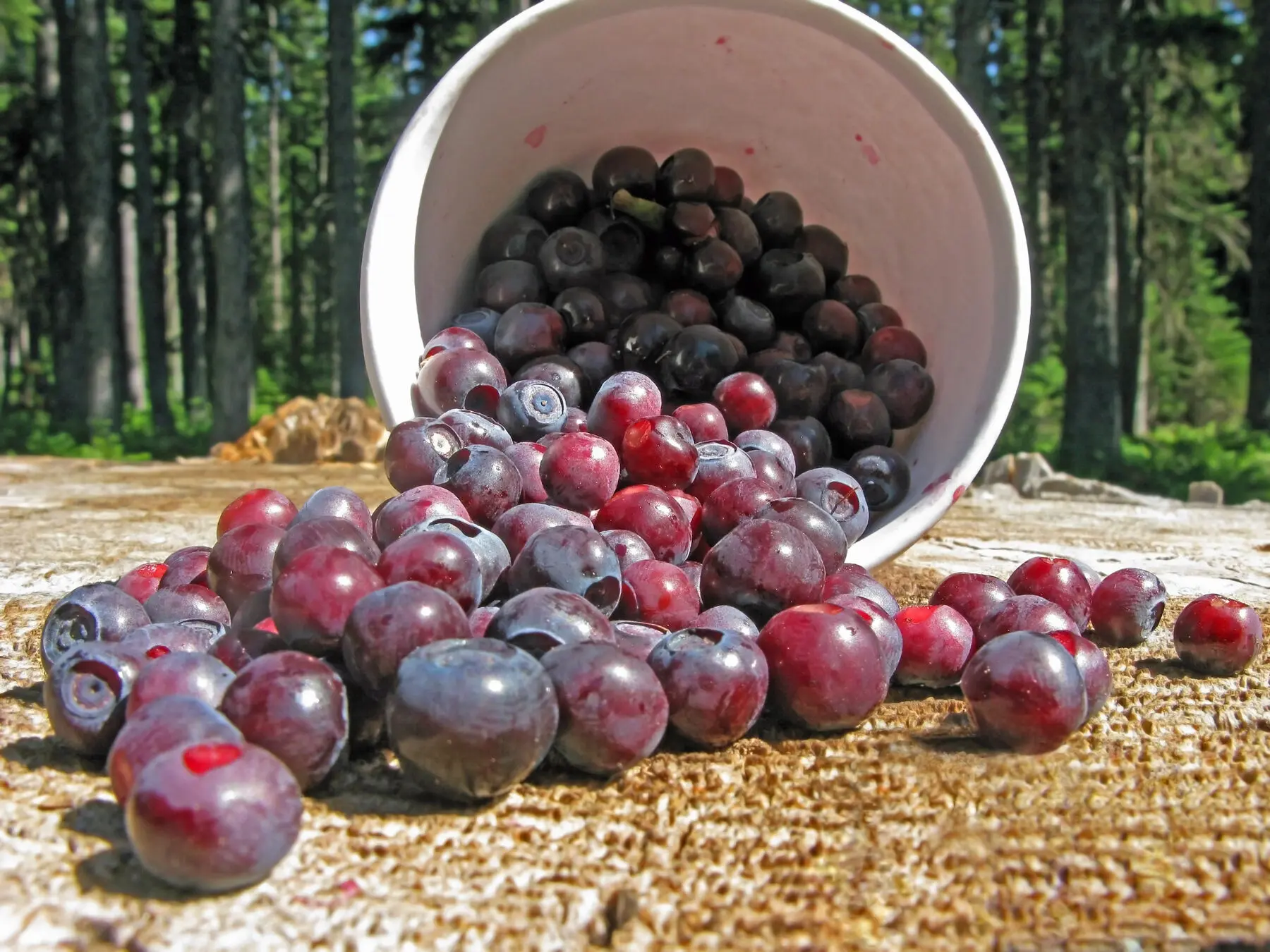By Lacey McNeff
—
Here in the Tetons, the first signs of sweet wild berries appear in the spring. I listen for the buzz of bees, beetles, and wasps, and watch moths, butterflies, and hummingbirds flock to plants, taking note of where berries should arise in a few months’ time. (My imagination runs wild with delicious ideas, even though harvest is a tortuous wait away.) These telltale pollinators are vital — and each plant calls to them differently with unique fragrances, shapes, and colorful flowers.
Wild berries nourish us, as well as much of the region’s wildlife. They are rich in vitamin C, vitamin B, fiber, potassium, manganese, and antioxidants. According to the National Library of Medicine article Recent Studies on Berry Bioactives and Their Health-Promoting Roles, berries boost immune function, fight inflammation, and tend to our cardiovascular and gastrointestinal systems. Plus, they are incredibly delicious.
“Any time we eat wild foods, we are connecting with the terroir and receiving whatever is in that soil. The soil is full of microbes, minerals, natural compost, and life,” says Jenna Barnes, a local retreat chef and herbalist. “We are rewilding and rebuilding our microbiome when we eat wild foraged berries.”
In the summer, thimbleberries and serviceberries are typically the first to fruit. The leafy greens of these local wild berry plants provide protection for small animals and act as host plants for butterfly and moth larvae. Some wild berry plants grow near streams and rivers and help control erosion and provide watershed protection.
So, tread lightly to lessen your impact while picking summer berries, being mindful of the other wild beings they sustain. Take time to commune with the plants, asking permission to pick; if a berry doesn’t pull off the branch easily, it might not be time to harvest.
Teton Wild Berry Guide
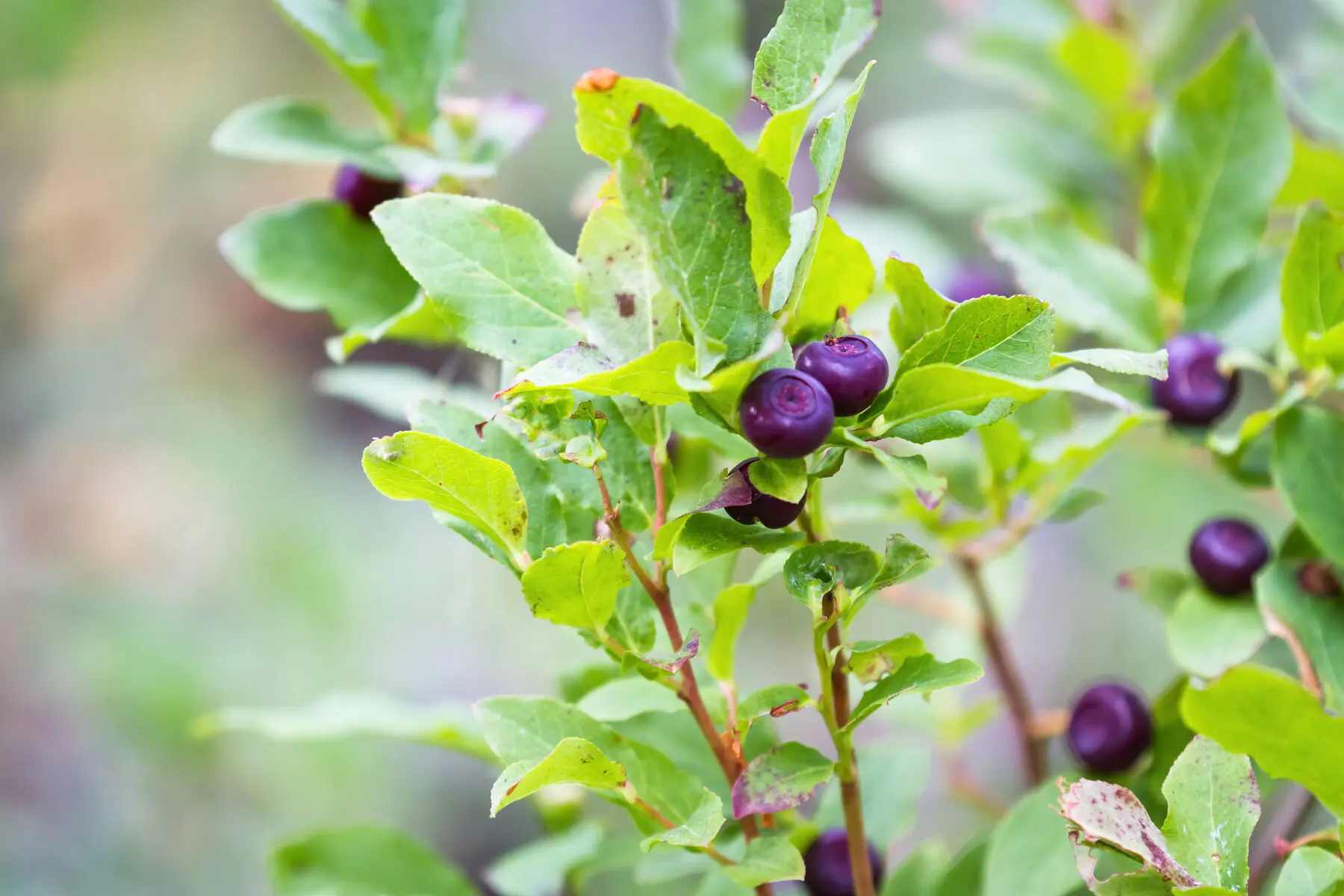
Huckleberry
Sharing the bounty: Bears, deer, elk, mice, birds, grouse, cranes, foxes, pikas, rabbits, skunks, and squirrels
On the hunt: Huckleberries are small, round, and dark blue or purple. The plant’s oval leaves have serrated edges, with a slightly pointed tip. They are low-growing shrubs that reside at mid- to high elevations, often in pine forests.
Picking season: Late July through mid-September
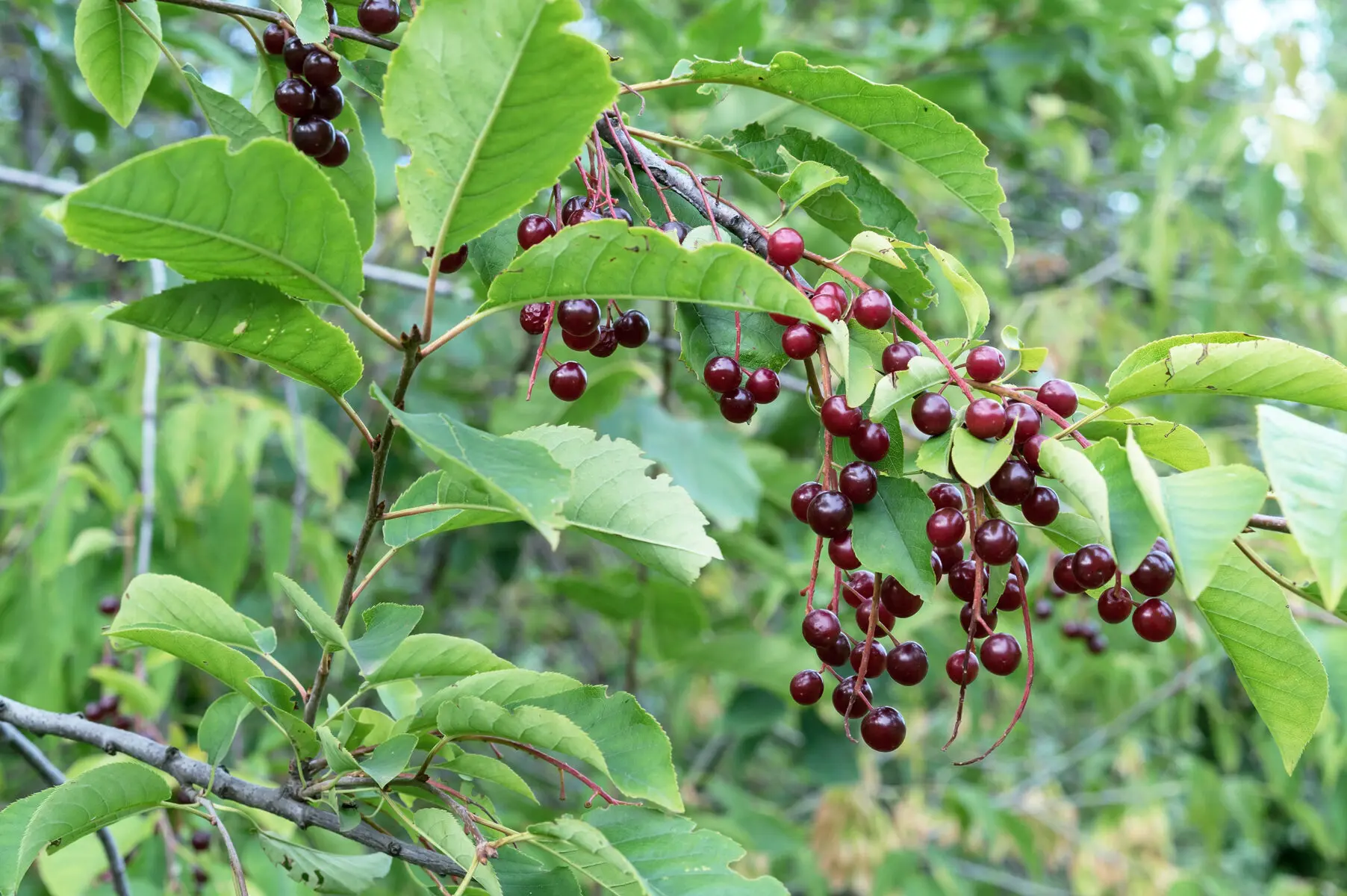
Western Chokecherry
Sharing the bounty: Birds, rabbits, voles, mice, bears, squirrels, deer, elk, coyotes, and bighorn sheep
On the hunt: Chokecherries grow on small trees or shrubs with grayish bark. The oval leaves are dark green and glossy with serrated edges and fuzzy undersides. The dark crimson berries grow in clusters, have an astringent flavor, and are often used for making jam. The seeds and stems are poisonous and can be fatal to livestock and moose.
Picking season: August through October
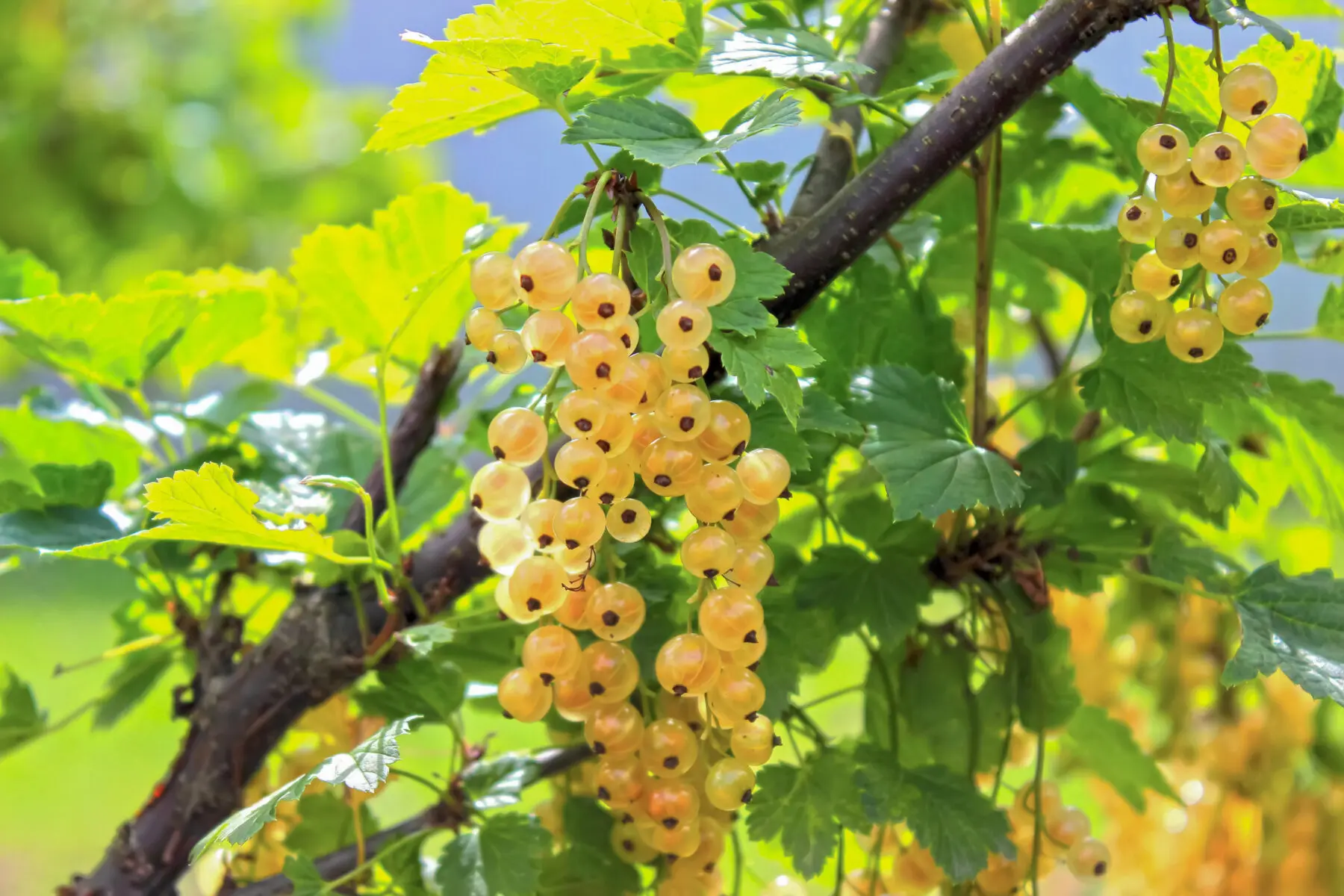
Golden Currant
Sharing the bounty: Birds, squirrels, chipmunks, mice, voles, deer, rabbits, foxes, skunks, bears, and moose
On the hunt: Common along streams and in ravines and canyons, the golden currant plant is small with smooth leaves made up of three to five lobes. Its bright yellow flowers grow in dangling clusters. Berries can be golden, orange, red, or even black.
Picking season: August and September
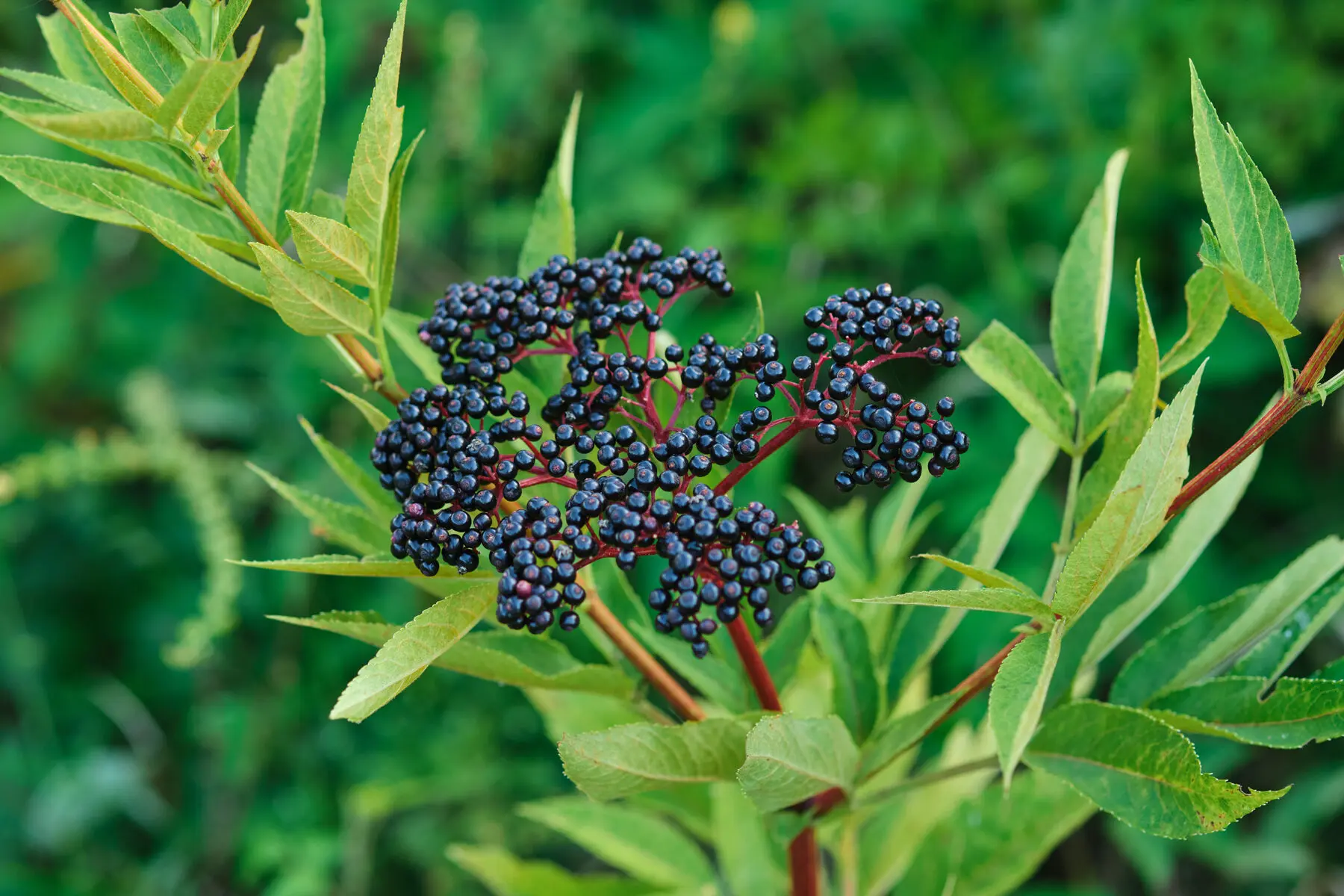
Blue Elderberry
Sharing the bounty: Birds, bears, squirrels, chipmunks, deer, elk, moose, foxes, and mice
On the hunt: Typically found on moist ground along creeks and in riparian areas, this shrub contains toothed, lance-shaped leaflets. When ripe, the waxy berries are dark blue or purple and hang from the branches in heavy clusters.
Picking season: Mid-August to mid-September
FUN HEALTH FACT:
The USDA’s plant guide states that blue elderberry contains flavonoids and rutin, which are known to improve immune function and ease cold and flu symptoms. Elderberry syrup is a popular remedy among herbalists.
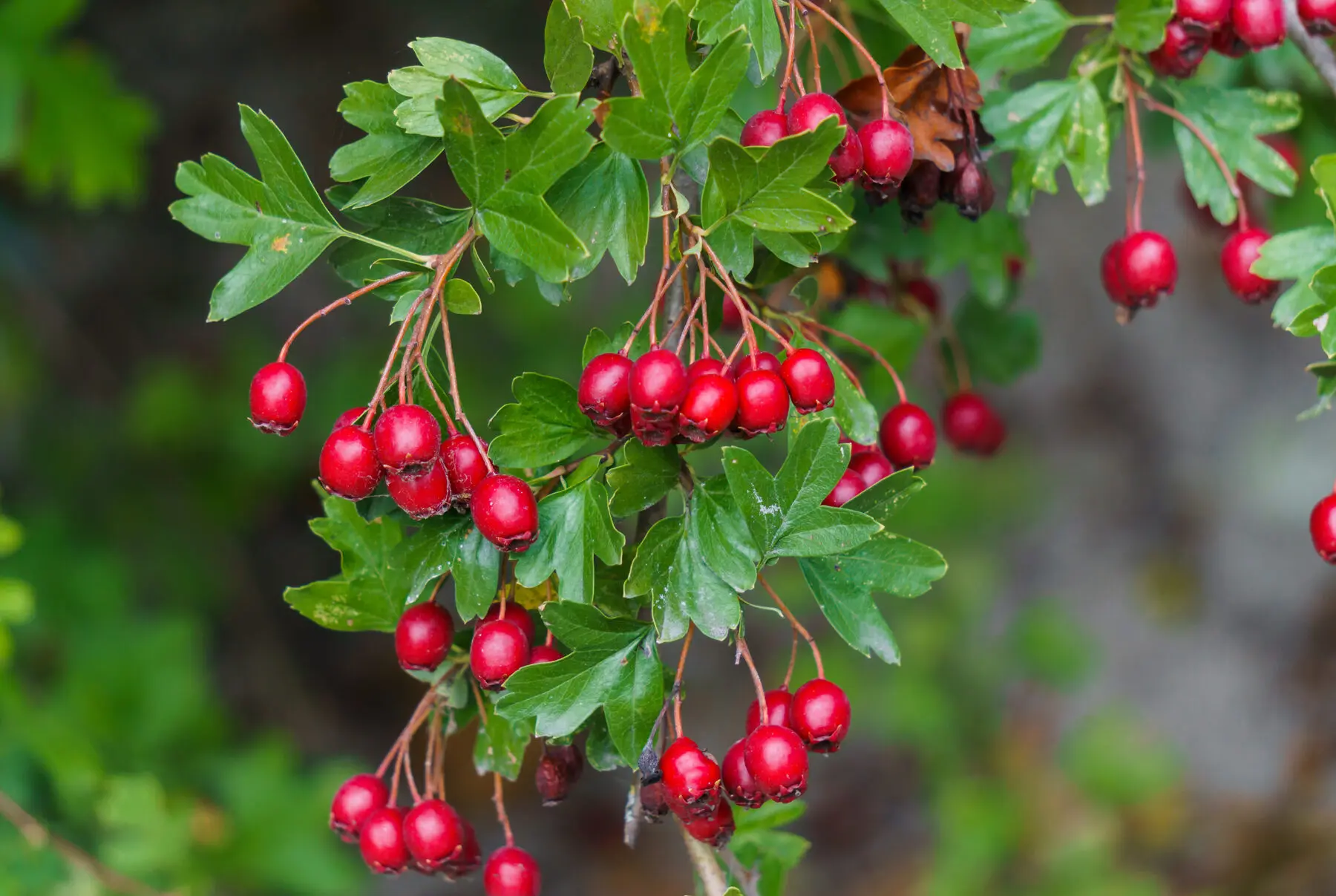
Hawthorn Berry
Sharing the bounty: Bears, small birds nimble enough to avoid the thorns, grouse, small mammals; deer and rabbits munch on the twigs and bark
On the hunt: This thorny shrub, or small tree, can be found alongside rivers and creeks and as an understory component in aspen groves. The leaves are lobed and have serrated edges and the branches contain large, abundant thorns. Hawthorne berries start out red, and then turn purple, with a five-pointed star at the base of each berry.
Picking season: After the first autumn frost
FUN HEALTH FACT:
According to the University of Rochester Medical Center website, Hawthorn berries may be safe and effective as treatment for mild heart failure. They’re also used as a nervine, promoting calmness, and have a mild sedative effect.
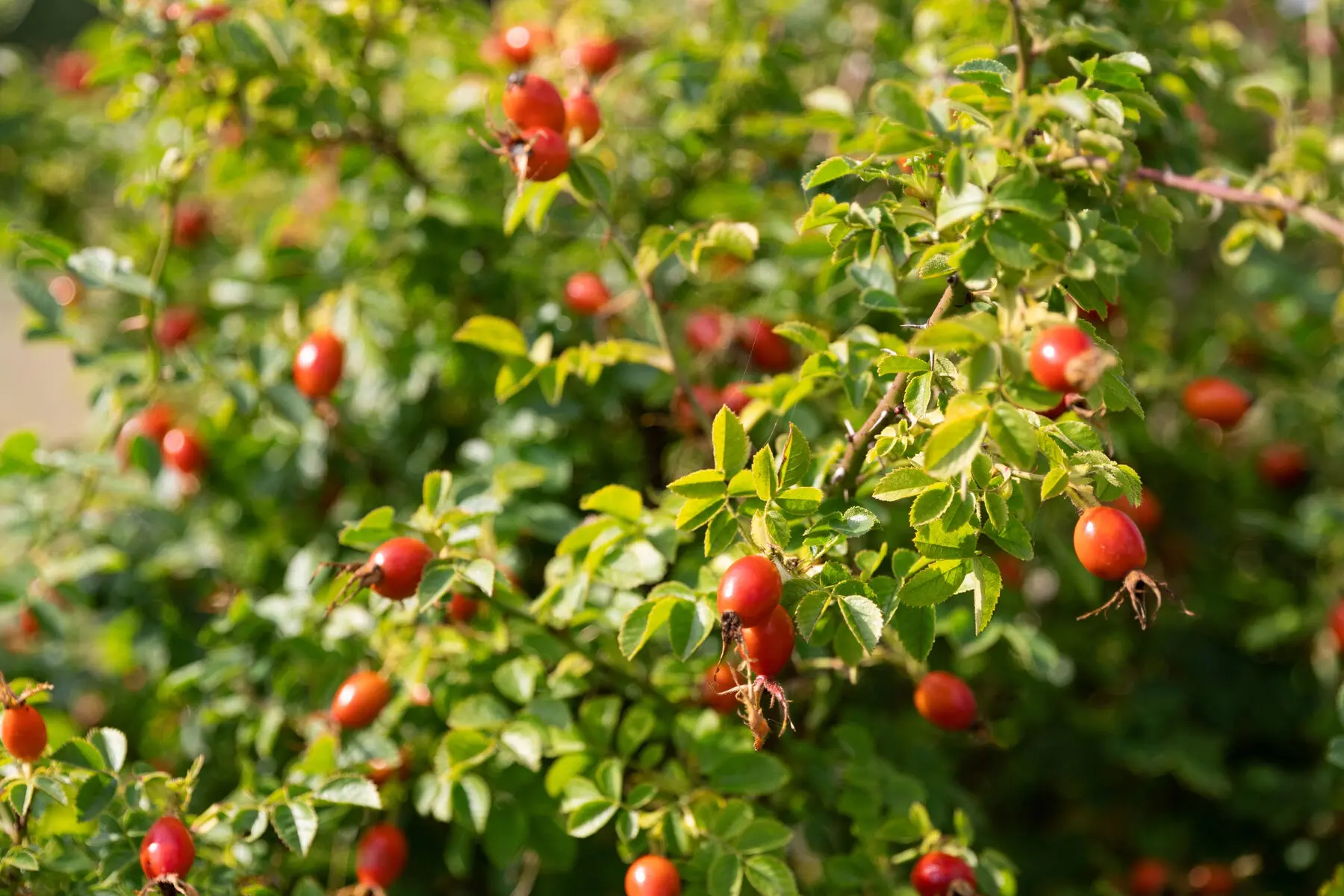
Rosehips
Sharing the bounty: Birds, rabbits, deer, moose, squirrels, coyotes, and bears
On the hunt: Not technically a “berry,” rosehips are the fruit produced by wild roses that grow rampant in subalpine forests. The flowers of the rose bush are pink with a yellow center, and the hips are typically bright red or orange with a pointed tip. Watch out for the bush’s small thorns when picking!
Picking season: After the first autumn frost
FUN HEALTH FACT:
Rosehips are jam-packed with vitamin C!
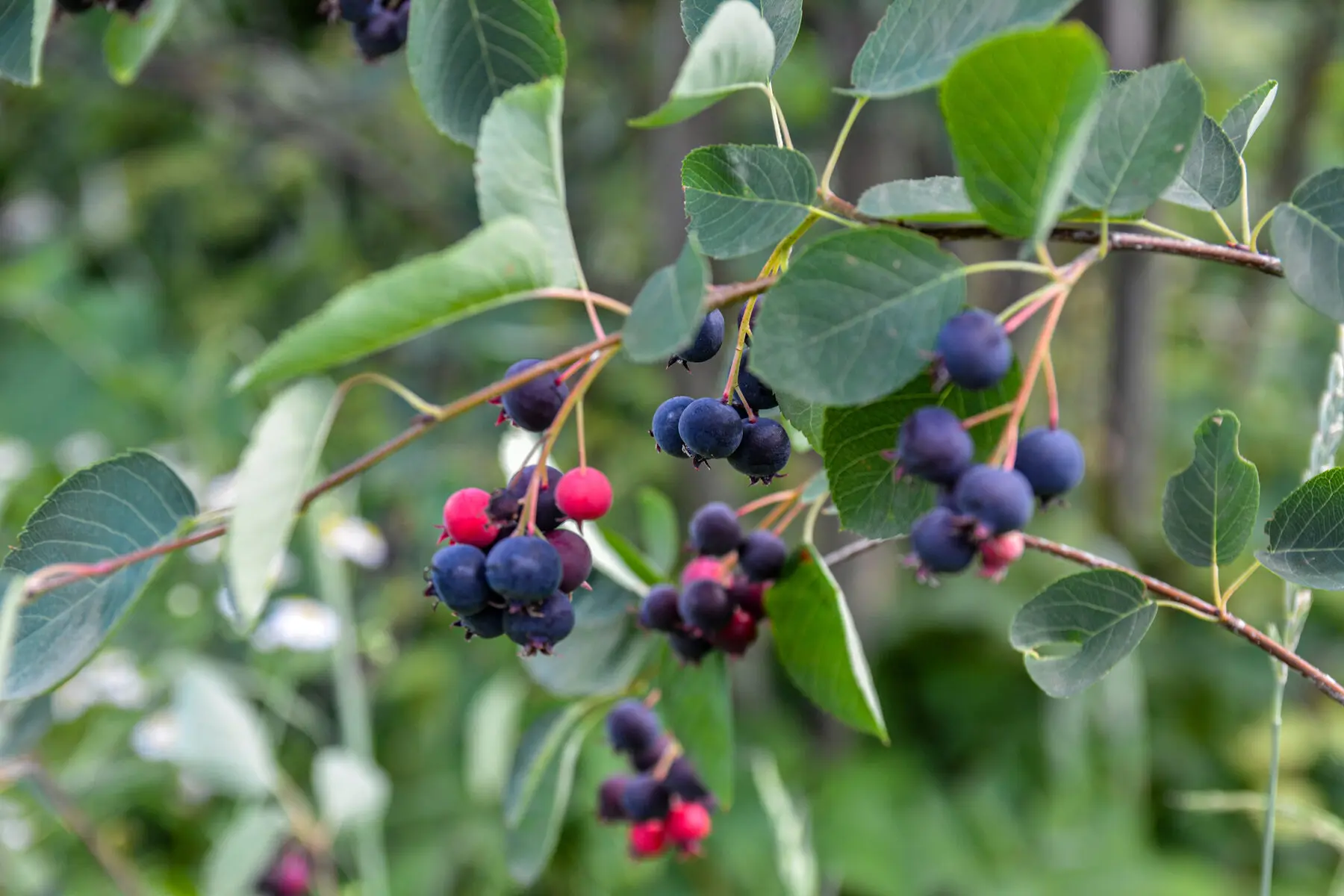
Serviceberry
Sharing the bounty: Birds, bears, elk, moose, deer, foxes, chipmunks, squirrels, rabbits, and voles
On the hunt: Serviceberry bushes are an understory tree that grows on hillsides, in forests, and on rocky slopes. The tree has a smooth gray bark, and the berries look like a large blueberry that turns deep purple when ripe.
Picking season: Late June through July
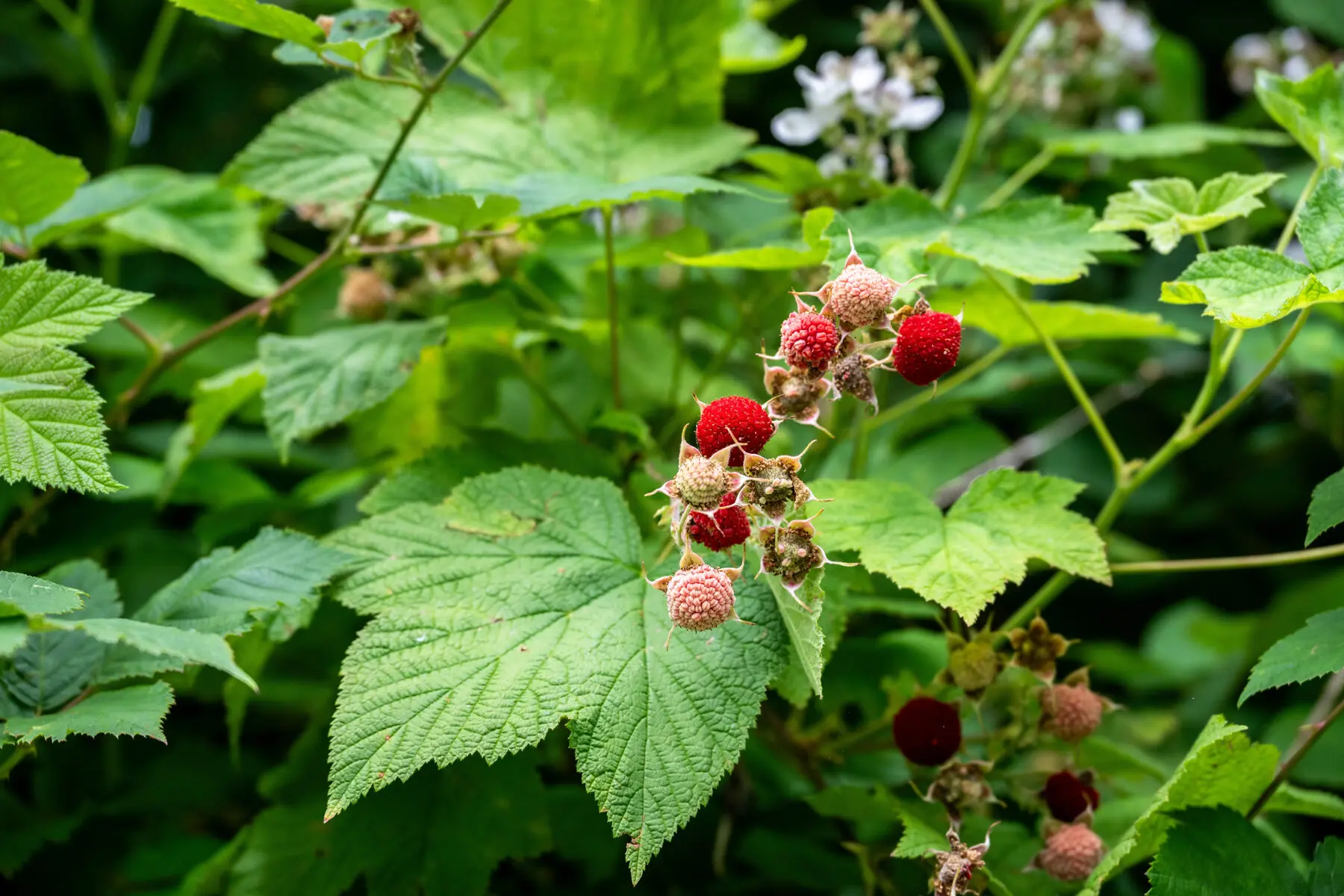
Thimbleberry
Sharing the bounty: Birds, deer, bears, foxes, voles, mice, and chipmunks
On the hunt: Look for thimbleberries in the mountains, in places that are shady, moist, and cool. The plant’s leaves are shaped like maple leaves with a fuzzy underside. The berries grow in red shallow domes made up of drupelets (small, juicy bits that come together to form the whole, similar to a raspberry). When viewing the berry from the top, it resembles a thimble.
Picking season: July and August
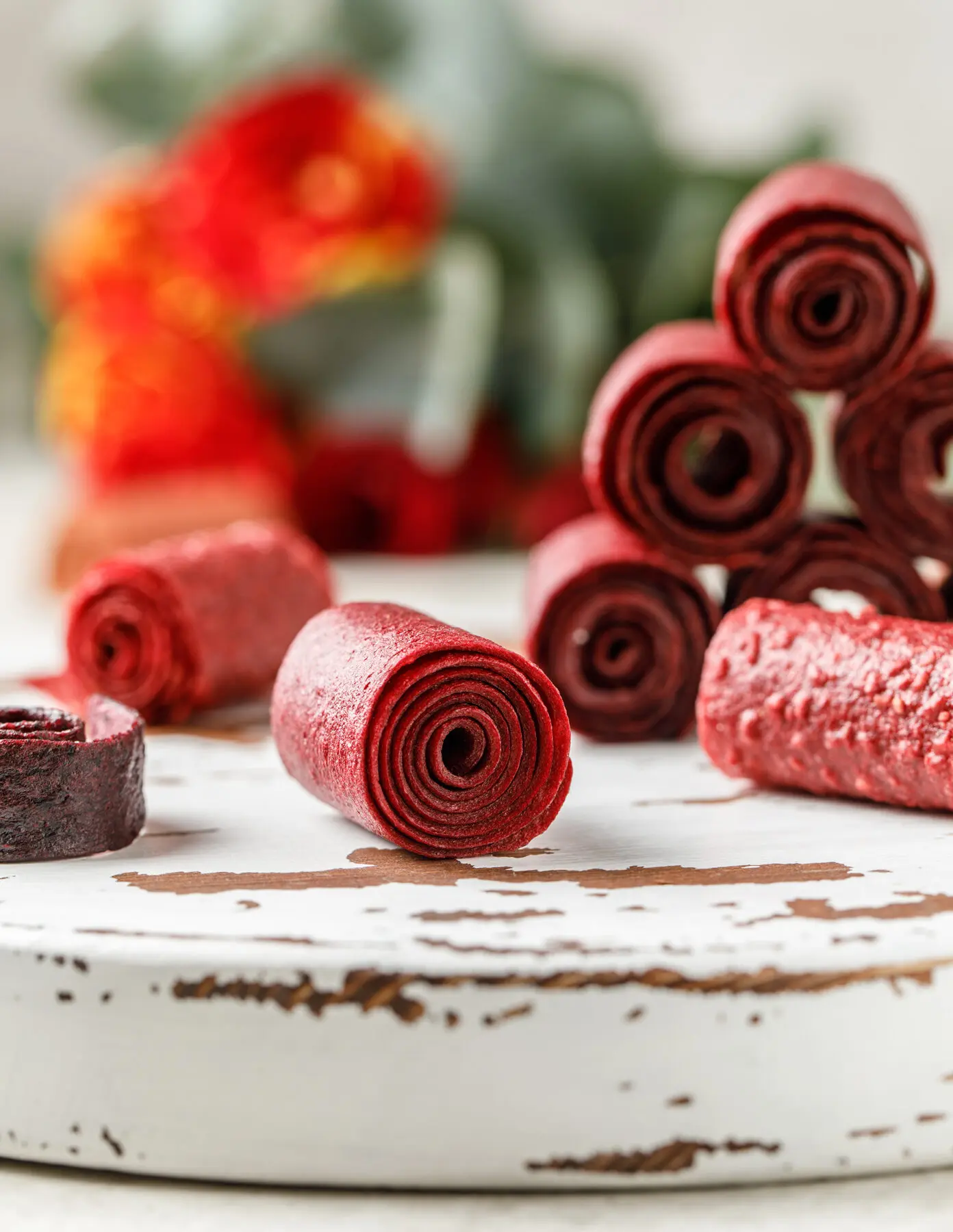
Wild Berry Maple Fruit Leather
—
Serves 4 people
—
Savor the bounty of wild berries throughout the year by preserving them as a fruit leather. You can use any mixture of berries and adjust the sweetness by adding your desired amount of maple syrup or honey.
—
3 cups mixed berries (huckleberries, serviceberries, currants, or hawthorn berries)
½ cup water
¼ teaspoon kosher salt
¼ cup maple syrup (or honey)
1 tablespoon lemon zest
parchment paper
baking tray
- Preheat oven to its lowest temperature (approximately 170° F).
- Add berries, zest, salt, and water to a stainless-steel pot. Bring to a simmer and cook for approximately 30 to 45 minutes, stirring frequently, until the berries turn to mush and only a small amount of liquid remains. (Add water if the fruit appears to be drying out.) Remove from heat.
- Transfer contents to a blender or food processor and puree until smooth.
- Add maple syrup and lemon zest. Pulse to incorporate.
- Line a baking sheet with parchment paper. Spread the pulp mixture onto the paper in a thin layer.
- Bake in the oven for 3 to 4 hours until firm and just slightly tacky (or dry in a dehydrator).
- Remove from oven and let cool.
- Slice into strips with a pizza cutter or sharp knife.
- Store in an airtight container layered with parchment paper.
*Recipe adapted from foragerchef.com.
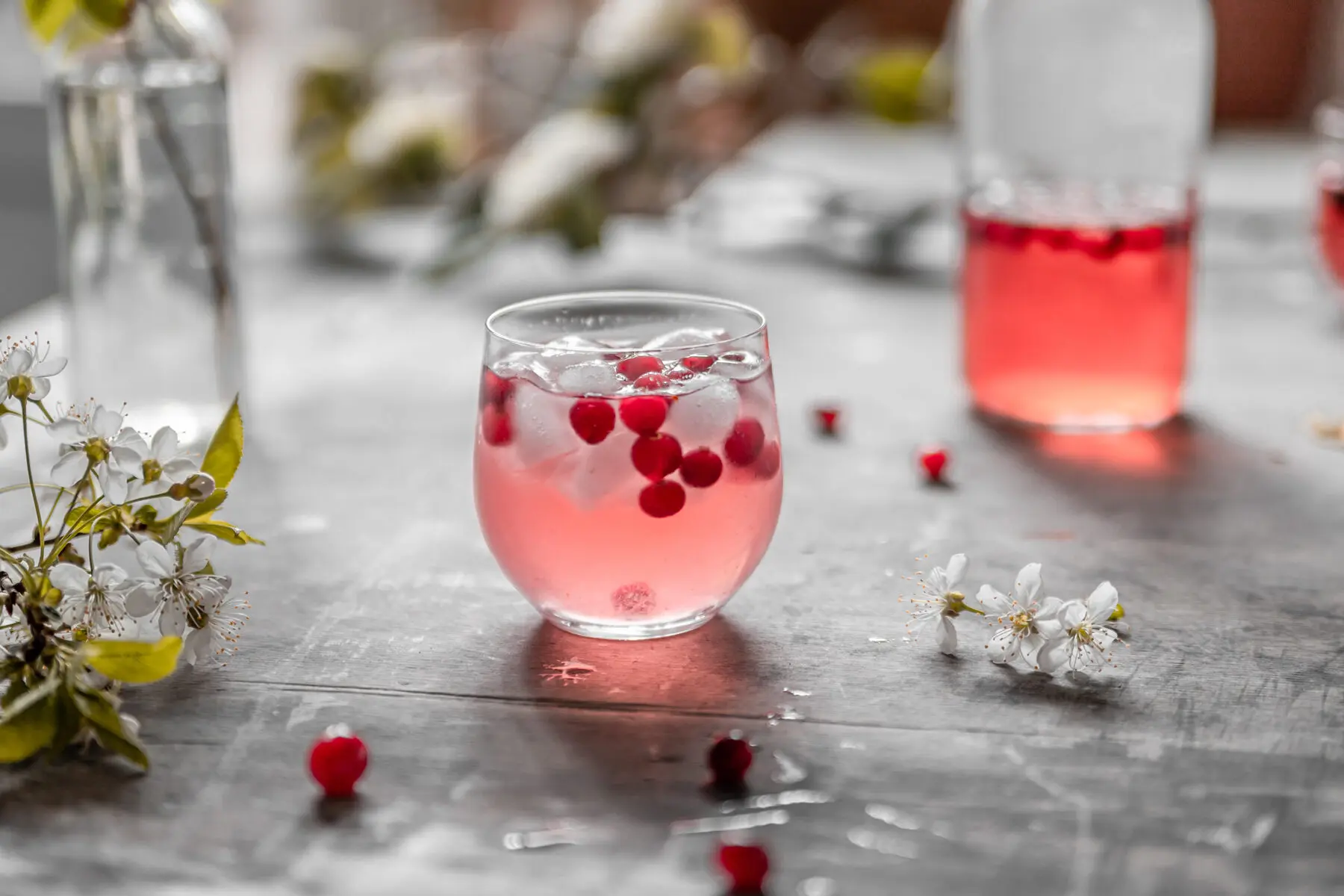
Serviceberry Syrup Spritzer
—
Makes 4 drinks
—
Creating a syrup from wild berries serves as a way to preserve the bounty long past ripening season. This syrup can be used as-is on pancakes, over ice cream, or in the suggested spritzer recipe from wild-chef and herbalist Jenna Barnes.
—
4 cups serviceberries
1 cup water
¼ cup honey
1 can unflavored seltzer or club soda
4 sprigs lemon balm
For the simple syrup:
- Rinse berries and remove stems and damaged berries.
- Place berries and water in a stainless-steel pot. Simmer for approximately 15 minutes.
- Let the mixture cool and then press it through a fine mesh strainer or cheesecloth.
- Add honey to the strained berry mixture.
- Store in a glass jar with a tight-fitting lid in the refrigerator.
For the spritzer:
- Place 1 sprig of lemon balm in each glass, add ice and 1 to 2 ounces of syrup, then fill the remaining space with seltzer or club soda. (Add spirits, if desired.)
- Stir and enjoy!

